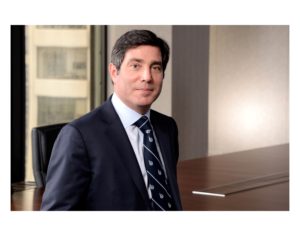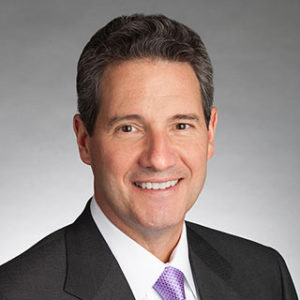Property/casualty insurance industry leaders delivered two different views on whether workers compensation will continue to be a bright spot on the industry profit picture during an investor conference last week.
Christopher Swift, chair and chief executive of The Hartford, isn’t yet worried about the impact on profits from medical severity—the focus of predictions of other executives, including W. Robert Berkley Jr., president and CEO of W.R Berkley Corporation, who has been warning about the possible impacts of medical cost inflation for some time.
Related 2023 article: Insurance Groundhogs Have Their Day: Some Primary Prices Need to Go Higher
Swift and Berkley each answered questions teed up by UBS Analyst Brian Meredith about different segments of the P/C insurance market, the carrier’s strategies, inflationary trends and their generative AI programs during the UBS 2024 Financial Services Conference in Key Biscayne, Fla., in late February.
Swift, who foresees continued workers comp profits this year, also told Meredith that his company has been diversifying away from workers comp as it mixes up its offerings to include more property and specialty business. Berkley said his company, which already operates in more than 60 distinct specialty niches, recently added a large account workers comp writer in California to the group, as it waits for a time in the future when that business can grow.
“We’re very focused on trying to maximize whatever the market opportunity is before us,” Berkley said, leading off his session of the conference. Reiterating an idea he often repeats on earnings conference calls—that different segments of the P/C insurance marketplace don’t move in lockstep—he highlighted the D&O liability and workers comp insurance segments as places where his company is taking a disciplined defensive posture while leaning into the E&S and property spaces.
Before Meredith even finished asking a question about when the competitive environment in workers comp will end, Berkley jumped in to answer. “I’ve been predicting it and I’ve been consistently wrong,” the CEO interjected.

“We have a view that there’s likely some challenges for that product line on the horizon,” W. Robert Berkley Jr. said, referring to workers compensation.
“When it comes to comp, my view is that frequency trend has been a friend not just during COVID but even before and after that,” Berkley said. “Severity trend is going to be a problem,” he said, suggesting that medical costs are roughly 50 cents on every dollar of claim costs within the comp space. “If you take half a step back [and] look at the situation that the providers, health system, etc., find themselves with, their economic model is broken. They have had to endure inflation, particularly around labor for some number of years now just as the rest of the economy has. But when it comes to their revenue or their deal with payers, those tend to be multiyear in nature.”
“Ultimately I think you are going to see that the payers are going to have to start playing ball and allow the providers to fix their economic model. Otherwise they’re bust. And that includes workers compensation…”
“There may be a lag, but it’s going to have to catch up because the status quo is not sustainable,” Berkley said.
At Hartford, Swift affirmed that “medical severity is a significant watch area as we sit here today,” but told Meredith and the UBS audience that workers comp “still remains a highly profitable line.”
“You’ve heard us say that repeatedly. I don’t see that changing in 2024,” he said. “I think it’s going to contribute meaningfully to our overall profitability and ROE.”

“What I would say on comp [is] it still remains a highly profitable line. You’ve heard us say that repeatedly. I don’t see that changing in 2024. I think it’s going to contribute meaningfully to our overall profitability and ROE.”
Christopher Swift, The Hartford
Separating the components of loss trend, Swift reported that comp “frequencies are behaving,” and he expects them to continue to behave in 2024. “Wage indemnity probably is coming down a little bit,” he added, referring to indemnity payments based on salary replacements. “There’s less pressure from an inflation side” on those costs, he said. “It still will be elevated, but less so. It’s not increasing,” he said, turning his attention to medical inflation.
“Generally, going back years, it’s behaved and actually outperformed our expectations,” he said, noting that The Hartford prices and reserves for a 5 percent rate of medical inflation. “That’s what we put on the balance sheet. And as those reserves season and we outperform that, that would provide an opportunity for positive prior-year development,” he said.
That said, while medical inflation is “still contained” below the 5 percent figure, “you’ve heard our tones the last couple quarters. It’s ticking up just a little bit,” he said, referring to commentary that he and CFO Beth Costello have offered on The Hartford’s earning conference calls.
“It’s still below 3 percent, but we have seen some increases,” Costello said. “But [there is] nothing that gives us concern because…we’re pricing, we’re reserving for a much higher trend. And there’s a little bit of trend on trend built into that,” she added.
Both Costello and Swift described investments in technology to summarize medical records, assisting the carrier with the claims process for workers compensation.
Swift, who discussed this in response to a question about The Hartford’s use of AI, said, “We’re able to ingest medical records and then using ChatGPT to summarize those medical records for [the] adjuster to see…Nothing is embedded in the workflows yet as far as the next recommended decision. But that will be an evolution over the next couple years to really start to augment your human decision-making,” he said.
Costello linked the investments in medical record ingestion to continued workers comp profitability at the carrier. “That’s a big deal for us because we get a lot of medical records, and [we are] able to make sure that we’re being charged the right prices based on what the fee schedules are in various states, as well as the networks that we contract with, as well as making sure that we’re paying for the workers comp injury and not other injuries,” she said.
At the beginning of both the sessions with The Hartford executives and the session with Berkley, Meredith asked the carriers to discuss their overarching strategies. He specifically asked Swift to describe his company’s competitive positioning in the commercial insurance market vs. a decade ago and contrasted to what it might be a decade into the future.
“It’s pretty simply just night and day compared to 10 years ago,” Swift said, answering the first part of the question, referring to The Hartford’s restructuring coming out of the financial crisis and eventual acquisition of specialty insurer Navigators. “We’re diversifying away from our workers comp product line, which is industry-leading but was a little more concentrated, ” he said, noting a recent investment in property underwriting and risk managements skills and the Navigators “E&S chassis.” He said that the E&S business is focused in construction, but the goal is to move into other industry verticals with specialty coverages.
Meredith prompted Berkley to talk about the future of his company, prodding him with the idea that the E&S/specialty company is “constantly starting businesses,” and specifically asking for details of recently started businesses.
“We spend a lot of time on one hand trying to capitalize on the opportunity that’s before us today, but also to try and be setting the table for where we see the market tomorrow,” Berkley said, putting recently launched businesses in the E&S space—one primary and one excess—in the group of businesses leaning into current opportunity. “That dovetails very well with our existing offerings,” he said.
“We also set up what I would define as a large account comp writer primarily focused on California. That would very much fall under the category of setting the table for tomorrow,” he said. “It’s relatively modest in size. It’s a business that was set up by a group of very capable and talented people, and we have great expectations for where that will be when market conditions line up.” At that point, “that will be a tremendous contributor to the group,” Berkley predicted.
Meredith then asked Berkley how W.R. Berkley Corporation incents leaders to remain disciplined when favorable conditions are not lining up.
Said Berkley, “It starts with the people that join the organization. Do they have a shared set of values and priorities that dovetail with the priorities of the organization overall?”
“In addition to that, [Berkley’s people] are remunerated in a way where a meaningful percentage of their compensation is longer term in nature. And as far as the senior leadership, quite frankly, much of their compensation is earned over a five-year period. And we do that deliberately because the average duration of our reserves is about four years,” he said. “We want to make sure that the timing is aligned and that no one is declaring victory before we have clarity for the shareholders,” he stated.





















 Is the AI Boom a Bubble Waiting to Pop? Here’s What History Says
Is the AI Boom a Bubble Waiting to Pop? Here’s What History Says  Breaking: Andersen to Replace Zaffino as CEO of AIG on June 1
Breaking: Andersen to Replace Zaffino as CEO of AIG on June 1  Artificial Intelligence Is Rewriting the Rules for Commercial Lines
Artificial Intelligence Is Rewriting the Rules for Commercial Lines  How Insurers Can Avoid Post-Merger Technology Failure
How Insurers Can Avoid Post-Merger Technology Failure 




